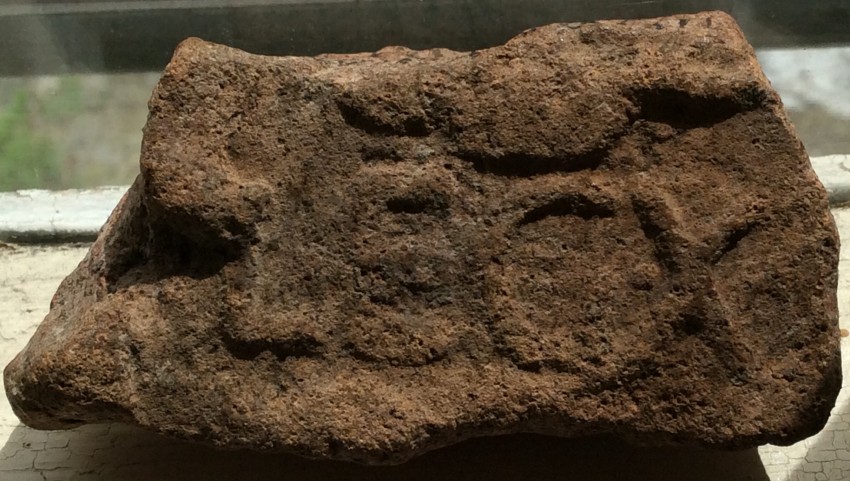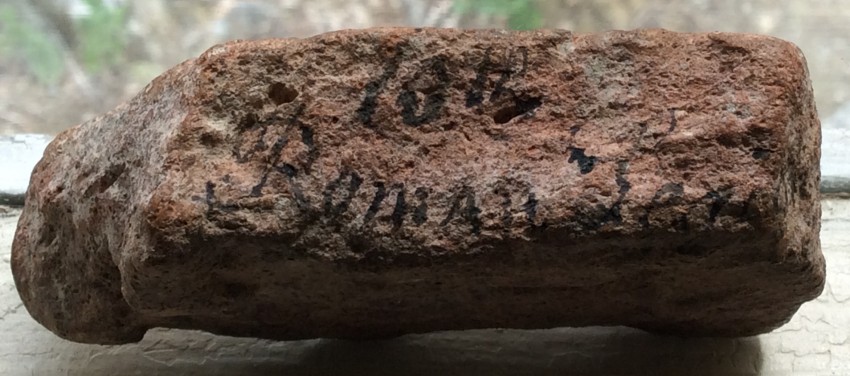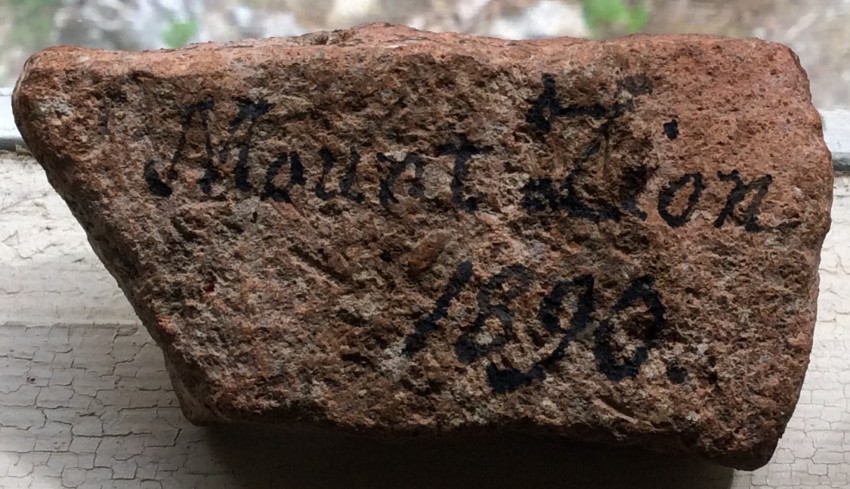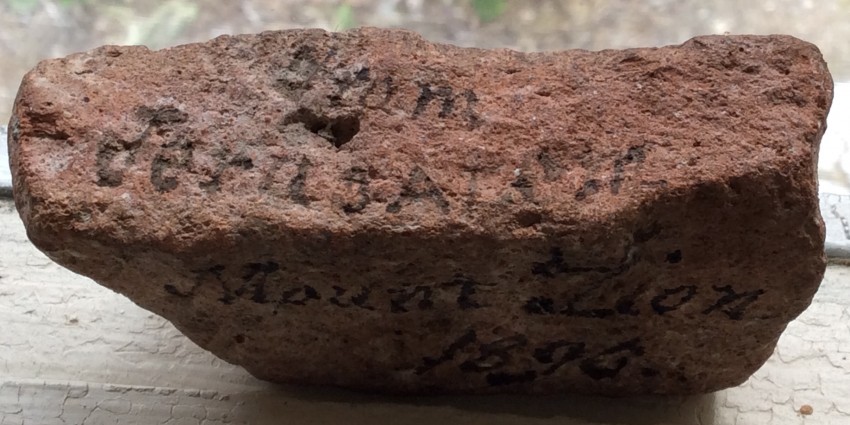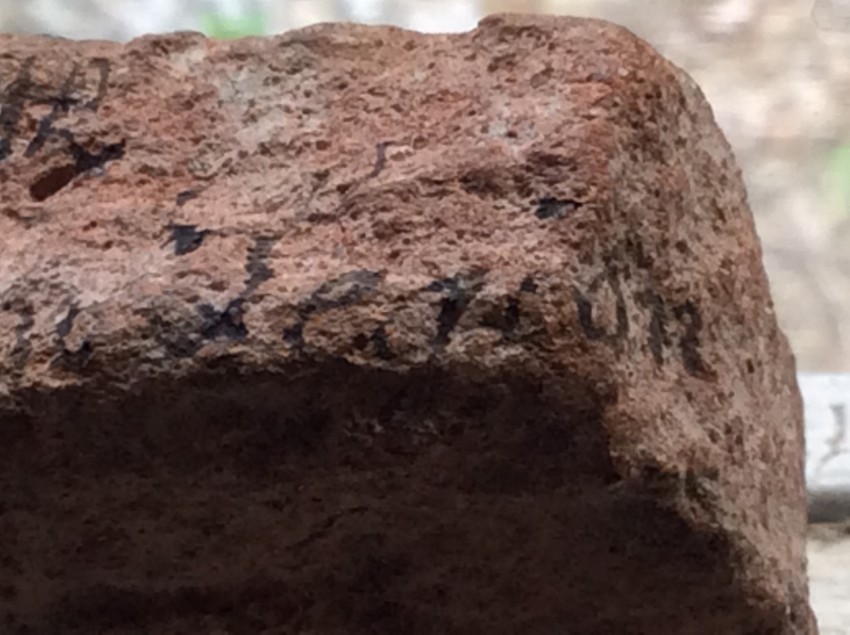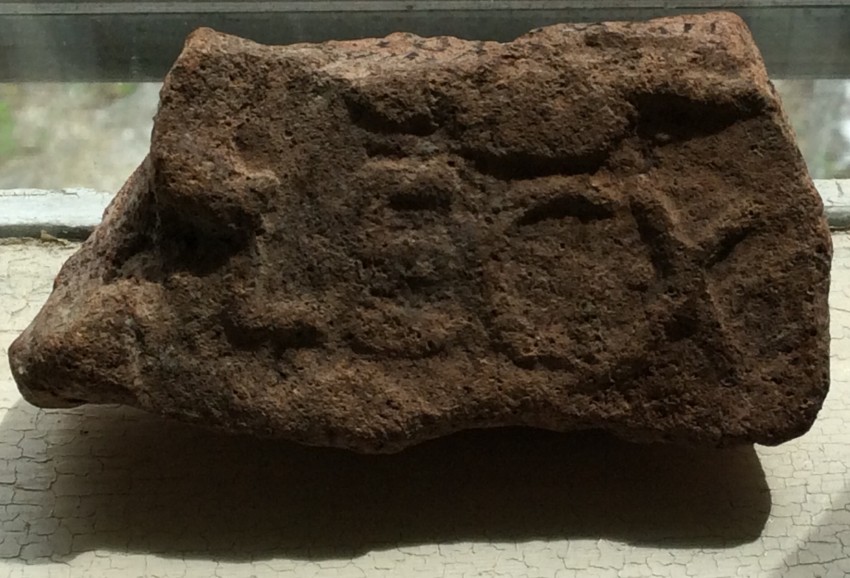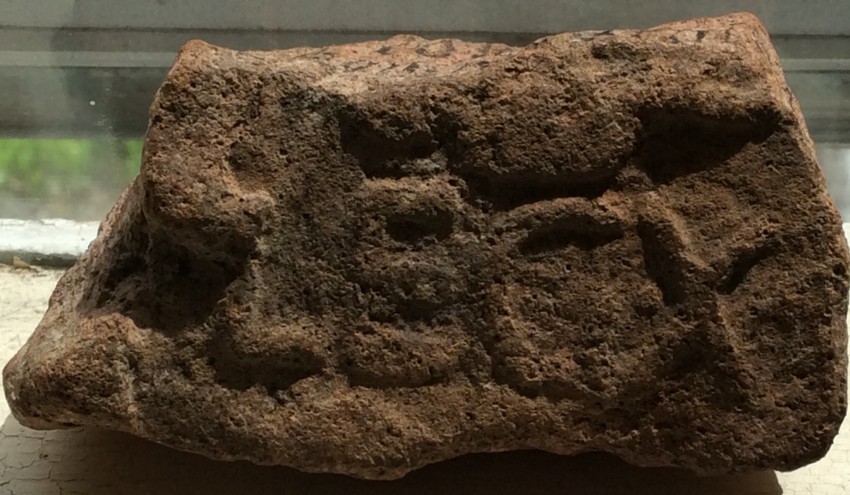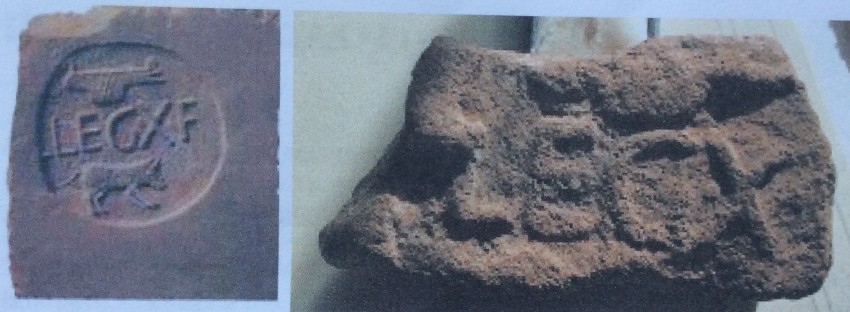Roman Occupation of JERUSALEM.
A fragment of a Roman pottery roof tile, the upper surface showing part of the stamped seal of the Tenth Roman Legion. The fragment includes the letters 'LEG. X' with part of a warship above and the back of a wild boar below. Complete tiles are lettered 'LEG. X. F' which is itself short for Legio X Fretensis ("Tenth legion of the sea strait").
Date: circa 70-310 A.D.
Approx. size: 3 1/2 x 1 3/4 x 3/4in
Condition: see images
Provenance: the tile was collected by a visitor to Jerusalem at the end of the 19th century, when the whole area was under Ottoman rule. At the time the new owner wrote in black ink on three surfaces: the upper edge of the fragment is lettered in black ink "10th Roman Legion"; lower edge lettered "from Jerusalem", the lower surface lettered "Mount Zion 1890"; purchased recently at auction.
A reminder of the fate which befell Jerusalem following the Great Jewish Revolt.
Zev Radovan notes that "The Romans destroyed Jerusalem at the end of the summer of 70 C.E. Under the command of the Roman general Titus, they burned the city and dismantled the Temple, thus ending the First Jewish Revolt (66—70 C.E.)—the so-called Great Jewish Revolt.
The Romans were not content simply to defeat the Jews. They pursued a policy of deliberate devastation, eradicating not only Jerusalem’s central religious institution but the city’s fortifications, public buildings and large residential quarters. Those Jews who managed to survive the long siege were later massacred by Roman soldiers or, in some cases, led into captivity and sold as slaves.
Silent but vivid evidence of these dramatic events in Jerusalem’s history was exposed during excavations in the 1970s at numerous sites throughout the city. Although no excavations took place on the Temple Mount itself, digs just outside the southwestern corner of the Temple Mount revealed tremendous piles of gigantic ashlars (squared stones) that covered the public courtyards and streets built by Herod the Great (37–4 B.C.E.) to serve those who came to worship at the Temple. The excavators found thousands of stones that had once composed the upper part of the Temple Mount’s massive retaining walls but had been deliberately toppled from their original places and thrown outside the Temple enclosure. Jewish prisoners of war had probably been forced by the Romans to undertake the long, tiring process of destroying the Temple and its surroundings. For the Jews, it was the ultimate humiliation—the destruction of their sacred Temple at their own hands..."
Radovan continues: "Although the discovery of thousands of roof tiles on the western hill ['Mount Zion'] may seem to suggest considerable building activity, that is not the case. The average intact roof tile is little more than 21 inches (54 cm) long and about 18 inches wide (47 cm on one side and 46 cm on the other side). Thus, it takes about five or six tiles to cover a square meter (taking into account the required overlap). A roof of 100 square meters would take, conservatively, 700 flat tiles and the same number of partially curved tiles to cover the joins. Every second or third tile was stamped with the Tenth Legion seal. In the excavation in the Jewish Quarter, we found more than 500 stamped tiles, so the total number must have been no more than 1,500. Our conclusion is that this was enough to roof only a few structures of medium size (built over a period of more than 200 years)"For the full article "Searching for Roman Jeruslaem", see https://berlinarchaeology.files.wordpress.com/2013/08/geva-1997-roman-jlem.pdf
- Size: 88 x 45 x 19mm
- Sold By: Shadowrock Rare Books
- Contact Person: Adam Langlands
- Country: United States
- Email: [email protected]
- Telephone: 001-860-248-1547
- Preferred Payment Methods: Paypal, US$ checks and wire transfers, major credit cards through paypal
- Trade Associations: AA Approved


